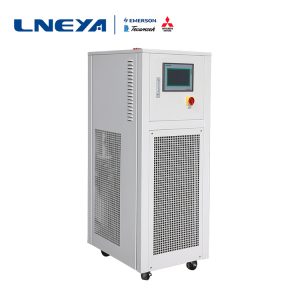Temperature conditions of new energy vehicle batteries

When automobile manufacturers continue to improve battery life to overcome the driver’s mileage anxiety, the energy density of the large batteries installed is also gradually increasing, which means that the temperature monitoring function of the battery system needs to be more perfect. No matter in the case of normal driving or fast charging, in order to ensure battery life and avoid battery thermal runaway, the design of the battery system needs to consider the heat dissipation strategy and overheating protection mechanism.
Generally, the battery system of a pure electric vehicle (BEV) has about 100 temperature measurement points, and each measurement position represents the battery temperature state in this area. The overall temperature distribution state is collected by the BMS, and is monitored and communicated by the BMS. Judging the result, the temperature control strategy of the whole vehicle can be corrected in real time, for example: improving water cooling efficiency, limiting battery charge and discharge current, etc.
Because of the importance of the combination of battery temperature control mechanism and BMS, existing testing laboratories and battery manufacturers have put forward the verification requirements of battery temperature control and BMS judgment mechanism. In the test process, in addition to requiring temperature measurement accuracy and temperature reading synchronization, it also has a detection function that can simulate temperature control changes in real time when the temperature changes.
The reasonable temperature of the battery pack is between 10°C and 30°C, and the liquid cooling system may reach -40°C in low temperature weather. It is necessary to increase the temperature of the -40°C liquid cooling system to cool down. How much liquid needs to pass through at this time? To ensure that the battery temperature is controlled within the range of 10°C-30°C, and the pipe diameter of the automotive liquid cooling system is fixed, then the pressure needs to be adjusted to control the flow. By analogy, as the temperature of the car coolant changes, the pressure also needs to change in order to ensure the flow of the battery coolant.
In high temperature weather, the temperature of the car coolant and the battery pack may reach above 50°C, what is the charging and discharging condition of the battery pack? The cooling capacity of the vehicle refrigeration system (cooling of the air-conditioning space in the vehicle, battery pack, electric drive, and engine liquid cooling system) is distributed in any way, so that the thermal management of the vehicle can be quickly balanced, and the performance of the vehicle can reach a reasonable range.
The above data comes from a test platform, if you have any questions, please contact us to delete and modify.

Related recommendations
-
What are the decarboxylation reaction conditions and process temperature control?
1762The decarboxylation of aromatic acids is easier than that of fatty acids. For example, benzoic acid can be decarboxylated by adding a little copper powder as a catalyst in quinoline solution and heating. When a strong electron-withdrawing group ...
View details -
Principle Analysis of Glycol Chiller
1576Glycol chiller is an industrial chillerwith glycol as refrigerant. The structure of glycol chiller is roughly the sameas that of ordinary industrial chiller, which is composed of compressor,evaporator, condenser and electric control system. ...
View details -
High temperature test equipment related troubleshooting
1646The high temperature test equipment is mostly caused by water shortage in the water circulation. This way, the purified water is replenished to the water tank until the water level meter on the lower right side of the water tank reaches about 80% ...
View details -
Temperature Control Soultion for Wafer Cleaning Solution in Semiconductor Industry
1891With the rapid development of semiconductor technology, the requirements for wafers are getting higher and higher, making clean wafer surfaces more and more important for the manufacturing of semiconductor devices. In the wafer manufacturing proce...
View details
 LNEYA Industrial Chillers Manufacturer Supplier
LNEYA Industrial Chillers Manufacturer Supplier













